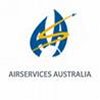Australia completes world-first airspace surveillance system

Airservices Australia has commissioned the worlds first satellite-based air navigation system delivering radar-like coverage of aircraft movements across the entire continent.
The national air navigation service provider has completed an $80m project which has involved the deployment of a satellite-based technology network called Automatic Dependent Surveillance-Broadcast (ADS-B) and a new digital communications backbone to support it.
Airservices CEO Greg Russell said the two systems, operational from midnight Friday (18 December), were major milestones. The successful delivery of these programs represents the culmination of years of planning to deliver Australias next generation, satellite based air traffic surveillance system, Mr Russell said.
ADS-B technology broadcasts an aircrafts call-sign, position, altitude, velocity and other data, twice every second.
The accuracy of the resulting information displayed on air traffic controllers screens allows them to reduce separation between aircraft to five nautical miles (around nine km), as opposed to current separation of 30 nautical miles (around 55km). This accuracy leads to improvements in safety and the efficiency of the national
airways system.
Mr Russell said the system was already delivering benefits in northern Australian airspace where severe weather associated with tropical cyclone Laurence is causing some disruption to air traffic.
The availability of ADS-B during times of tropical storms and turbulence means less restrictive diversions around bad weather, faster access to preferred flight routes and levels, and better situational awareness of other aircraft,
Mr Russell said.
ADS-B also improves the management of traffic flows into and out of busy east coast air corridors. It delivers environmental benefits by enabling aircraft to reduce fuel burn and emissions.
The system is supported by 28 ADS-B ground stations nationwide. These are now delivering continuous surveillance of aircraft operations in high level airspace across western, central and northern Australia where radar coverage does not currently exist.
They are connected to Airservices digital national communication network, which uses fibre-optic technology with satellite back-up to ensure security and reliability of information transmission.
More than 1100 aircraft are already equipped and approved to operate with ADS-B in Australian airspace.

.png)



.jpg)



Comments
There are no comments yet for this item
Join the discussion